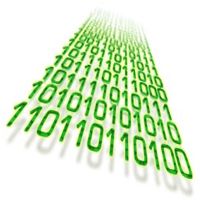Boolean values, through their simplicity, play a crucial role in various technologies and applications, enabling decision-making processes, controlling operations and filtering data efficiently.
Computer Programming
Boolean logic is integral to developing algorithms and implementing control flow in programming languages. Boolean logic operations give programmers the ability to implement decision-making processes in their code by evaluating conditions that return true or false.
For example, Boolean expressions are crucial in "if" statements and "while" loops and for validating conditions during software operations. These expressions determine which blocks of code are executed based on the outcomes of the Boolean evaluations.
In a programming language like Python, Boolean values often have use in control structures, such as:
if is_logged_in: # is_logged_in is a Boolean variable that can be either true or false
Digital Electronics
Boolean logic is fundamental in digital electronics, where it governs how different logic gates process binary signals to perform calculations and make decisions.
These gates are the building blocks for complex digital circuits, including multiplexers, demultiplexers and arithmetic logic units — all of which are essential for carrying out operations in microprocessors and other electronic devices.
In these types of circuits, Boolean values determine the output (voltage) based on the inputs. For example, in an OR gate, the output is true if any of the inputs are true. Here, true could be represented by a high voltage, and false by zero volts.
Additionally, Boolean logic is instrumental in designing and analyzing the behavior of circuits in both small-scale integrated circuits (ICs) and large-scale systems, ensuring they operate correctly according to the logical rules the programmer has specified.
Database Queries and Search Engines
In databases and search engines, Boolean logic allows users to filter and retrieve data based on specific criteria. This helps them create more focused queries, especially when searching through large datasets.
By employing Boolean operators like AND, OR and NOT, users can specify whether they want to include multiple terms together, at least one of several terms or exclude certain terms from their search results. This enables the search engine to better understand the intent behind the user's query and to filter and prioritize content that best matches the user's search criteria.
For example:
- Searching for "apple AND juice" will return results that include both terms.
- Searching for "apple OR orange" gives results that include either term.
- Using "apple NOT pie" provides results that include "apple" but exclude "pie."
Conditional Formulas
In spreadsheet applications, Boolean logic is used extensively within conditional formulas to make decisions based on specific criteria. For example, using the IF function, a user can create a formula that checks whether a condition is true or false and then performs different actions based on the result:
=IF(A1 > 10, TRUE, FALSE)
The above formula checks if the value in cell A1 is greater than 10. If it is, the formula returns true; otherwise, it returns false.
This application of Boolean logic allows the spreadsheet user to automate certain data management tasks, helping them to organize, analyze and visualize the data efficiently based on logical conditions.
We created this article in conjunction with AI technology, then made sure it was fact-checked and edited by a HowStuffWorks editor.



